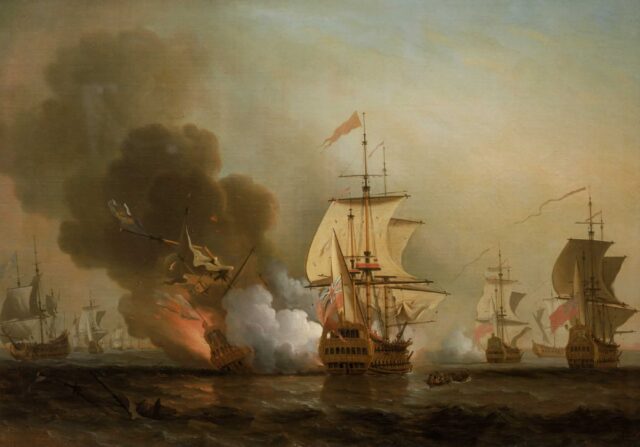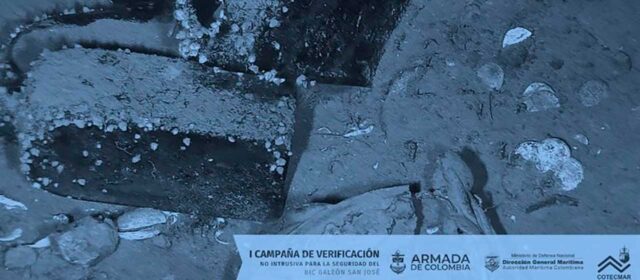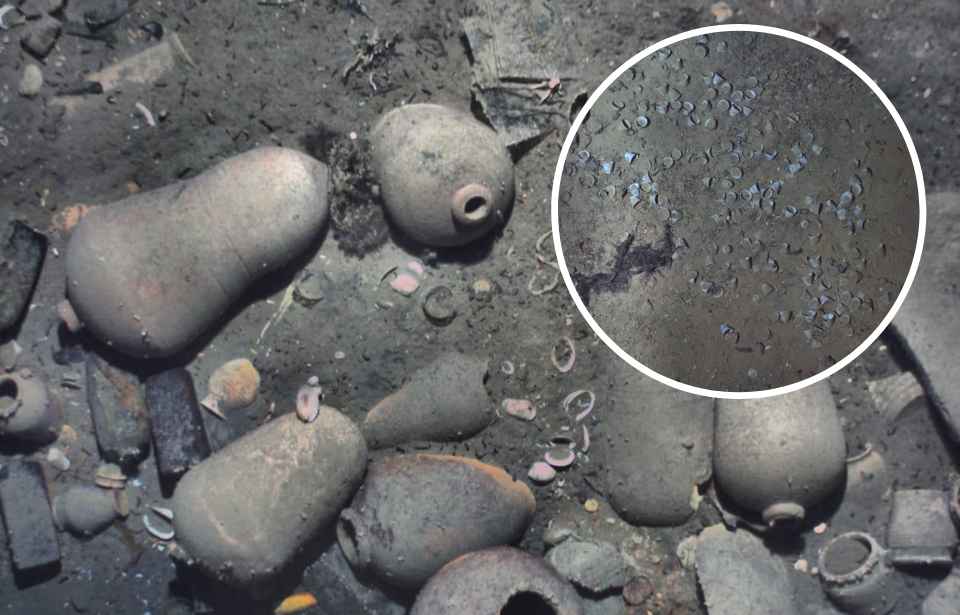A 300-year-old shipwreck discovered in the Caribbean in 2015 was confirmed to be that of the famed Spanish galleon San José. Nicknamed the “holy grail of shipwrecks,” the wreck is believed to hold a treasure trove of emeralds, gold and silver coins valued at $20 billion. The Colombian government conducted a robotic exploration of the site in August 2024, leading to incredible new finds among the sand and debris.
San José

San José was a 64-gun, three-masted galleon that served the Spanish Armada de la Guardia de la Carrera de las Indias. She was launched in 1698, and, with her twin ship San Joaquín, was part of the Treasure Fleet during the War of the Spanish Succession. During the conflict, she was tasked with transporting valuable goods from Spanish territories in the Americas across the Atlantic.
In 1708, San José was loaded with 116 chests filled with emeralds, seven million pesos and 30 million gold coins, valued at $20 billion. Headed for Cartagena, she and the fleet ran into an English squadron and engaged in battle. Unfortunately, the Spanish lost the naval engagement and San José sank to a depth of 600 meters.
Of the 600 individuals onboard the vessel, only 11 were lucky enough to survive.
Expeditions to San José‘s wreck

The wreck of San José was discovered off the coast of Cartagena in 2015. Onboard the Colombian Navy research ship ARC Malpelo, the team of international researchers from the Woods Hole Oceanographic Institution (WHOI) and the Maritime Archaeology Consultants (MAC) used the autonomous underwater vehicle (AUV) REMUS 6000 to survey the site.
“The REMUS 6000 was the ideal tool for the job, since it’s capable of conducting long-duration missions over wide areas,” Mike Purcell, the expedition’s leader and an engineer with WHOI, said in a press release.
After months of searching, the team located San José‘s wreck. Purcell explained, “The wreck was partially sediment-covered, but with the camera images from the lower altitude missions, we were able to see new details in the wreckage and the resolution was good enough to make out the decorative carving on the cannons.”
Who owns the shipwreck?

Since San José‘s discovery, the question of ownership has caused many problems. Certain groups claim to have discovered the shipwreck as early as 1982, laying claim to 50 percent of the value of the treasure aboard the sunken galleon. The Colombian government has had to deal with legal and diplomatic disputes, as ownership claims have also come from the United States and Spain.
Colombian officials have made several statements, assuring their intentions are for patrimonial reasons, not for the treasures believed to be with the wreck. Carlos Reina Martínez, an archaeologist and underwater cultural heritage expert with the Colombian Institute of Archaeology and History (ICANH), explained that the expedition was intended to reveal the realities of the 589 sailors who went down with the galleon, including the nature of their deaths.
The Colombian government intends to build a museum dedicated to San José, to publicly display the contents retrieved from the wreck, including canons, ceramics and any other artifacts. It also intends to build a conservation laboratory to preserve the items they plan to display at the facility.
Getting a closer look at San José

An expedition to San José‘s wreck took place from May 23-June 1, 2024, with the Colombia government previously stated it was prepared to invest approximately $4.5 million to the initiative. The research mission employed state-of-the-art technology to survey and collect as much information about the state of San José as possible, so the team could evaluate if it’s possible to raise the sunken galleon.
Information about the expedition was released the following August, with those involved providing new details about what was aboard the ship when she sank centuries ago. “Results of this exploration have revealed an unprecedented set of archaeological evidence, which has greatly expanded our knowledge,” the research team revealed in a statement.
“Although a concentration or archaeological remains was detected in 2022 in the area of the shipwreck, the recent exploration has allowed [us] to characterize these accumulations in more detail and to discover new isolated elements,” they added.
More from us: Archaeologists Opened a 2,000-Year-Old Tomb – What They Found Was ‘Unprecedented’
Want articles by The Vintage News delivered straight to your inbox? Subscribe to our weekly newsletter!
The robotic survey allowed for the discovery of an anchor and various bits of cargo, including glass bottles and jugs.
